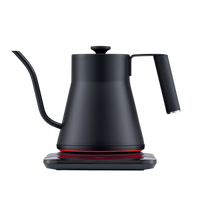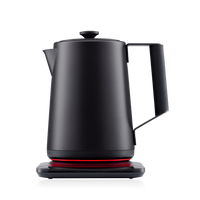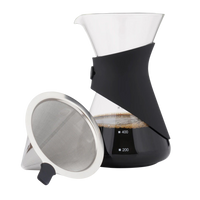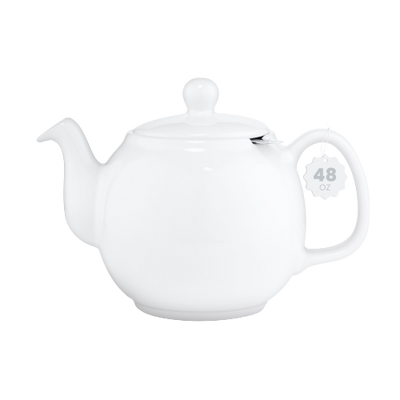top 10 secrets of porcelain teapots: collector's 2024 guide

Summary: Enter the captivating realm of porcelain teapots! Whether you're a seasoned collector or starting, there's something truly magical about these exquisite pieces. As interest in this delightful hobby grows globally, we're here to guide you through its intricacies.
1. Teapot's History: A Timeless Tale
Porcelain teapots are not just for brewing tea with hot water; they are like time machines, taking us back to ancient China. Imagine, over a thousand years ago, artisans creating these beautiful pieces by hand. Every dynasty, similar to individual chapters in a book, featured its unique style. The Ming dynasty favored elegant blue and white designs, while the Qing dynasty introduced vibrant colors.
Tea drinking has evolved since the 17th century, influencing teapot designs. The 18th century saw the East India Company introduce innovative styles. In the 19th century, the introduction of silver and clay teapots diversified tea presentation. Later, the addition of glass teapots further transformed it.
2. Identifying Authentic Teapot:
Think of yourself as a detective when looking at porcelain teapots. Authentic antique teapots possess distinct characteristics that verify their genuineness. Look for marks at the bottom, quality of the paintwork, and the feel of the porcelain. Exceptional craftsmanship marks some fakes, yet they fall short of matching the original artists' skill.
Understanding these indicators assists in identifying authentic, valuable teapots. Give careful consideration to the teapot's weight and balance, as they can indicate its genuineness.
3. Regional Variations: A Global Journey
Porcelain teapots from different parts of the world are like different characters in a story. Chinese teapots often have detailed, meaningful designs, while European teapots might be more elegant and simple.
Let's pause for a moment to admire two legendary teapots: China's 'Yixing Teapot' and Germany's 'Meissen Teapot'. Their unique designs and stories continue to inspire collectors. Each region’s style reflects its history and tastes, making your collection richer and more diverse.
4. Cultural Significance: More Than Just a Teapot
In many cultures, teapots are not just for making tea; they are symbols of tradition. In China, teapots are crucial in the Gongfu tea ceremony, a serene and elegant way of making tea. European teapots became status symbols, often used in fancy tea parties.
Knowing these stories makes each teapot in your collection more special. Different cultures use teapots in various ways, revealing much about their design and form.
5. Porcelain Art: The Artist's Touch
Some porcelain teapots are like art pieces, made by famous artists or in famous workshops. These teapots hold significance because they connect to renowned names in art history. Having these teapots in your collection is like owning a miniature art gallery at home. Knowing the artists and their stories adds a fascinating layer to your collection.
6. Teapot Valuation Factors:
What determines the value of a teapot? Common questions among collectors often revolve around the provenance and rarity of the pieces or its condition. At times, the value of a teapot can hinge on its previous ownership. Imagine possessing a teapot once used by a famous historical figure!
Learning what makes teapots valuable can help you choose wisely and appreciate the true worth of your collection. The historical importance of a teapot and the artist's fame actively influence its value. Also, the story behind a teapot's acquisition can impact its value.
7. Teapot Preservation Tips:
Consider your teapots as fragile and valuable treasures. Porcelain teapots require careful handling. Wash porcelain teapots by hand using mild soap. Protect them from too much light and heat, and keep them in a stable place with moderate humidity levels.
By taking good care of them, you are not just keeping them beautiful; you are also protecting pieces of history. Avoid using abrasive materials or strong chemicals that can damage the glaze or paint.
8. Teapot Market Trends:
The world of porcelain teapot collecting is always changing. What is popular and valuable can change over time. Keeping an eye on trends, auction results, and what fellow collectors like can help you make savvy choices for your collection.
Staying informed can also help you understand the value of the teapots you already own. Stay informed by subscribing to collector magazines and participating in online forums.
9. Community and Resources: Joining the Collector's Family
Being part of a collector community can be extremely rewarding. In this community, you have the opportunity to exchange stories, seek advice, and potentially uncover rare teapots. To enrich your collecting journey, join online groups, attend auctions, and dive into books and articles.
Being part of this community can deepen your knowledge and love for porcelain teapots. This is also a great way to find unique pieces and learn about upcoming events or auctions.
10. Beyond Aesthetics: Stories Behind the Art
Every teapot has its own story. As you add to your collection, you are also collecting these stories. Beyond appearances, porcelain teapots convey stories and embody history. This connection to the past and to different cultures makes collecting teapots a truly unique and enriching hobby.
Conclusion
Your journey as a porcelain teapot collector is not just about gathering beautiful items. Explore history, art, and cultures worldwide through your collection. Every piece in your collection contains a story, ready for you to discover and share. Enjoy this wonderful journey of collecting and cherishing these timeless treasures.






